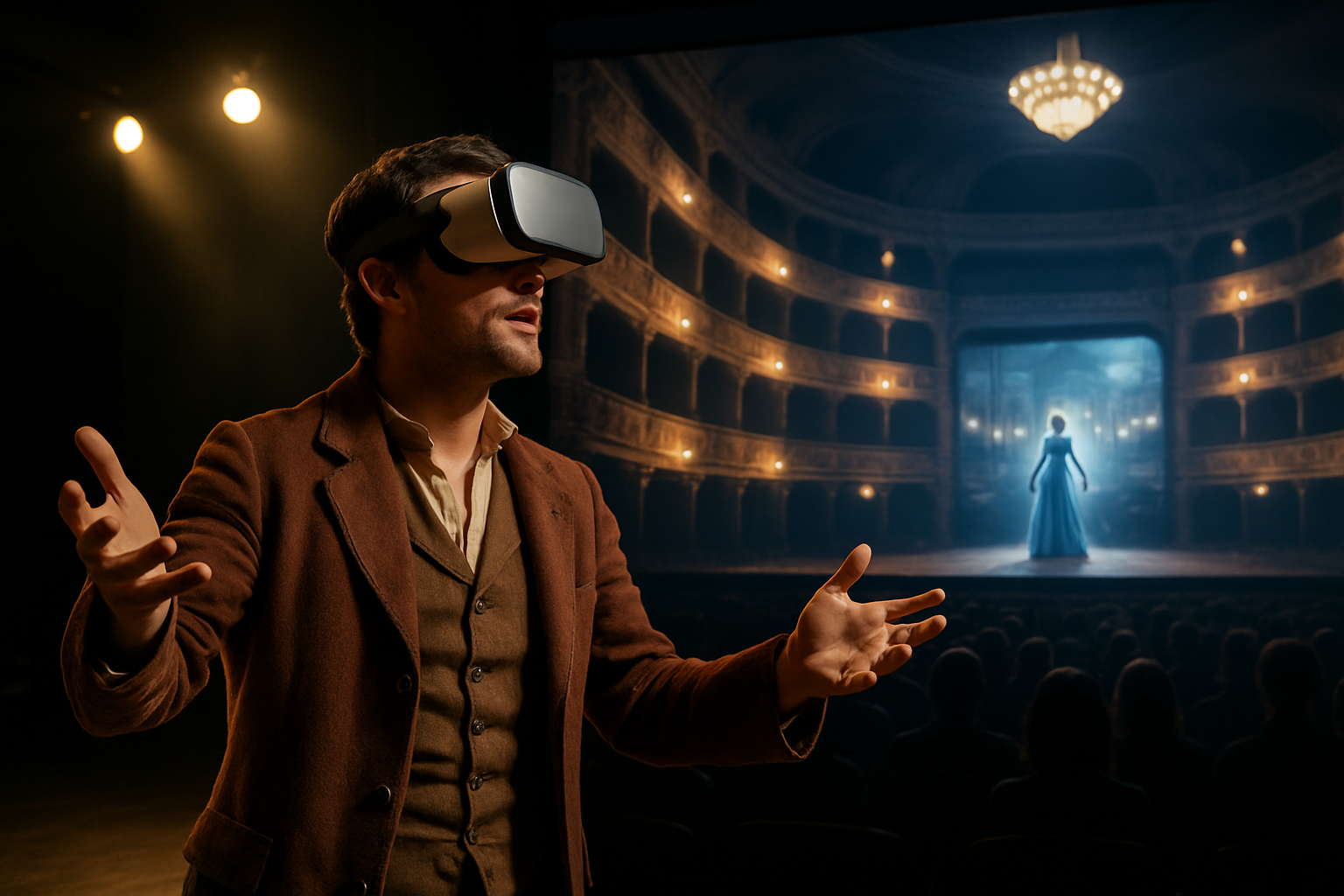Holographic Opera: Redefining the Lyric Stage
In the realm of performing arts, a groundbreaking fusion of technology and tradition is captivating audiences worldwide. Holographic opera, a cutting-edge innovation blending classical music with state-of-the-art visual effects, is revolutionizing the centuries-old art form. This avant-garde approach to operatic performance is not only attracting new audiences but also challenging the boundaries of artistic expression in the digital age.

The first full-scale holographic opera, Orphée+, debuted in Toronto in 2018. Created by the Against the Grain Theatre company, this reimagining of Gluck’s Orphée et Eurydice utilized cutting-edge holographic technology to bring the mythical underworld to life on stage. The production’s success sparked a wave of interest and investment in holographic opera, propelling the art form into the spotlight.
Technological Marvels Behind the Curtain
At the heart of holographic opera lies a complex array of technologies working in harmony. High-powered laser projectors, advanced motion capture systems, and real-time rendering engines come together to create stunning visual illusions. These technologies allow for the seamless integration of live performers with virtual environments and characters, blurring the lines between reality and fantasy.
One of the most crucial components is the holographic screen, a nearly invisible mesh that allows for the projection of 3D images while remaining transparent to the audience. This innovation enables holographic characters to appear alongside flesh-and-blood singers, creating a truly immersive experience.
Artistic Implications and Creative Freedom
Holographic opera has opened up new avenues for artistic expression, allowing directors and designers to push the boundaries of what is possible on stage. Fantastical settings that were once confined to the imagination can now be realized in stunning detail, transporting audiences to otherworldly realms with unprecedented realism.
Composers and librettists are also embracing the possibilities offered by this new medium. Works are being created specifically for holographic production, incorporating interactive elements and dynamic visual storytelling that responds to the music in real-time. This synergy between sound and vision is redefining the very nature of operatic composition.
Challenges and Controversies
While holographic opera has garnered significant acclaim, it has not been without its critics. Purists argue that the technology detracts from the raw power of the human voice and the intimacy of live performance. There are concerns that the visual spectacle may overshadow the music, shifting the focus away from the core elements that have defined opera for centuries.
Technical challenges also persist. The complexity of the systems involved can lead to glitches or malfunctions during performances, potentially disrupting the audience’s suspension of disbelief. Additionally, the high costs associated with implementing holographic technology have limited its adoption to larger, well-funded opera companies, raising questions of accessibility and artistic inequality.
The Future of Holographic Opera
As technology continues to evolve, so too does the potential for holographic opera. Advancements in artificial intelligence and machine learning are paving the way for even more sophisticated and responsive holographic performances. Some visionaries in the field are exploring the possibility of fully virtual operas, where audiences can experience productions from the comfort of their homes using virtual reality headsets.
The COVID-19 pandemic has accelerated interest in holographic opera as a means of reaching audiences when traditional live performances are not possible. This has led to increased investment and innovation in the field, suggesting that holographic opera may play an increasingly significant role in the future of the performing arts.
Educational and Outreach Opportunities
Holographic opera is not only transforming the stage but also opening up new possibilities for education and outreach. Opera companies are using the technology to create interactive exhibits and workshops that introduce young people to the art form in engaging and accessible ways. Virtual tours of opera houses and behind-the-scenes experiences are bringing the world of opera to audiences who might never have the opportunity to attend a live performance.
Furthermore, holographic technology is being used to preserve and recreate historical performances, allowing new generations to experience legendary singers and productions long after they have left the stage. This digital archiving of operatic heritage ensures that the art form’s rich history will be preserved for future audiences to enjoy and study.
Cross-Cultural Collaborations and Global Reach
The advent of holographic opera has facilitated unprecedented collaborations between artists from different parts of the world. Singers, musicians, and creative teams can now work together across vast distances, with holographic technology allowing for virtual rehearsals and performances that bridge geographical divides. This global connectivity is fostering a new era of cross-cultural exchange in the opera world, blending diverse traditions and styles in exciting new ways.
Moreover, holographic opera has the potential to bring world-class productions to remote or underserved communities. By reducing the logistical challenges and costs associated with touring large-scale operas, holographic technology can democratize access to high-quality performances, expanding the reach of this art form to new audiences around the globe.
As holographic opera continues to evolve and mature, it stands poised to redefine the boundaries of artistic expression in the 21st century. By seamlessly blending tradition with innovation, this groundbreaking art form is ensuring that opera remains vibrant, relevant, and captivating for generations to come. The curtain has risen on a new era of operatic performance, and the possibilities are as limitless as the imagination itself.





